15 of Psychology’s Greatest Masterpieces
Paintings from the great masters capture psychology's basic ideas
Great works of art resonate to us throughout the centures because they speak to us at a deep, emotional level. In my own teaching, I’ve found it helpful to interject a work of art now and then into a lecture jammed with the typical psychology diagrams, data slides, and theory descriptions. With a little explanation of the art work’s relevance to the topic, it seems that students are able to gain insight in ways that even the best Google image or Microsoft clipart can’t provide.
The considered wisdom in the field of art history is to keep its distance from psychology or psychological interpretations. My sense of this rift is that it reflects a desire to focus on the art and not the artist, or at least the factors impinging on the artist’s life. We don’t have to go down the road of analyzing the artist’s psyche, however, to gain psychological insights from his or her work. I would venture to guess that many of the great (or even non-great) works art that people most enjoy are appealing precisely because they tap universal human themes such as love, death, birth, happiness, despair, and the varieties of experience involving altered states of consciousness or grips upon reality.
Having summarized a few of psychology’s greatest movies, songs, and literary quotes, I thought it would be appropriate to share my favorite works of art with you here. Unfortunately, I can’t reproduce those art works here, nor should I, given copyright restrictions. However, in lieu of showing them to you in the blog, I’ve included a link to a publicly accessible website and briefly described them. I’ve also tried to sample a number of areas of psychology rather than stick with one theme. If you’re a psychology instructor, feel free to borrow these ideas for your own classes.
The Self (or vision):Rene Magritte (1898-1967), The False Mirror, 1928
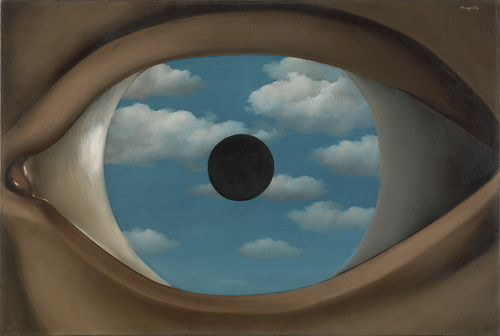
This is a powerful image of an eye staring at the viewer with the clouds passing through the iris. We think of the eye as the window to the soul, or as providing insight into someone’s personality. The surrealistic image of clouds instead of an iris could mean that we’re on the inside looking out or on the outside looking into someone else’s eye, and mind. Alternatively, this image could be a nice non-traditional start to a psychology lecture on vision. In either case, the image is a fascinating one that plays on our desire to understand others, if not ourselves, by staring into the eyes.
Mental Illness and Institutionalization: Vincent Van Gogh (1853-1890), Corridor in the Asylum, 1889
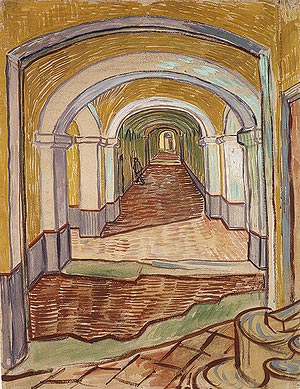
Van Gogh’s experiences in the last years of his life seems like an obvious connection to make between psychology and art. As depictions of the theme of “madness” and creativity, almost any of Van Gogh’s last paintings would seem to qualify. This particular image, showing a long, receding corridor, captures the loneliness and disarray of life in a mental institution at the end of the 19th century.
Attachment Theory: Berthe Morisot (1841-1895), The Cradle, 1872
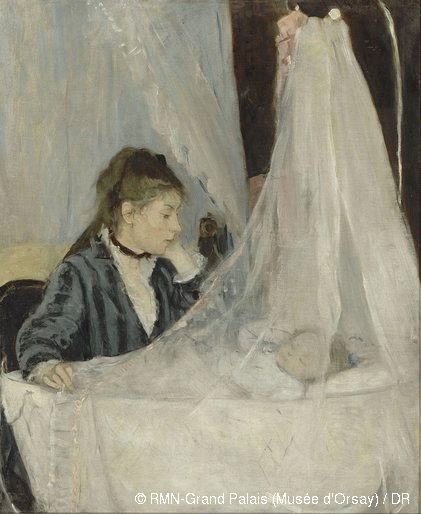
The mother looking lovingly at her baby in a cradle could be seen as a bit of mushy overindulgence, but this painting (by one of the few female Impressionists) focuses us on the mother’s attentive face rather than that of the cute baby in the crib. We see her staring intently at the child, perhaps with a bit of a smile on her face. Attachment theory in psychology describes a child’s bonding with the parent, but this image shows the reverse- namely, the bonding that a mother experiences as well.
Dreams: Marc Chagall (1887-1985), The Flying Carriage, 1913
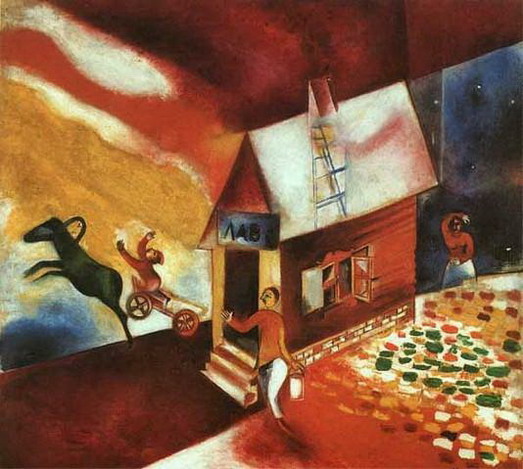
This fanciful painting of a man with a horse flying off the ground next to a small house (from the “shtetl” of Chagall’s youth), like many of his works, has a dream-like quality both in its airy brushstrokes and in the subject matter. Chagall’s “Fiddler,” similarly, portrays the Fiddler on the Roof that became the image we see in the musical (which also features a prominent dream sequence). Chagall, in putting on canvas the images from his youth, walks us through his early reminiscences which may very well have constituted many of his own dreams as well.
Cognition: Salvador Dali (1904-1989), The Persistence of Memory (1931)
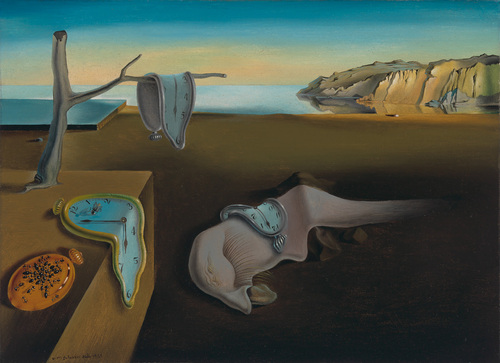
Admit it- you knew this one was coming. Dali’s painting of a desert littered with melting timepieces has come to symbolize in more than one psychology text, I’d venture to guess, the frailty of human memory. That Dali alluded directly to this in the title shows that he wanted us to think of the irony that our minds are not like machines and are droop more and more as time goes by.
Emotion: Edvard Munch (1863-1944), The Scream, 1895
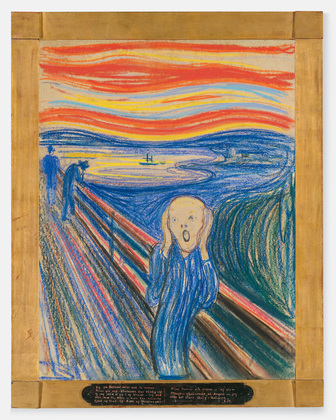
Perhaps you also anticipated this choice. Still, this doesn’t detract from the image of a man holding his face as he shrieks in agony is the perfect image of neurosis. Munch, whose work preceded the “Expressionist” movement, portrays the emotion of angst, or anxiety in this painting. As much as psychologists attempt to describe and understand emotions with theories and data, this screaming man captures the experience in ways that words and numbers cannot do.
Neuroscience: Michelangelo Buonaroti (1475-1564), The Creation of Adam (Sistine Chapel ceiling), 1508-1512
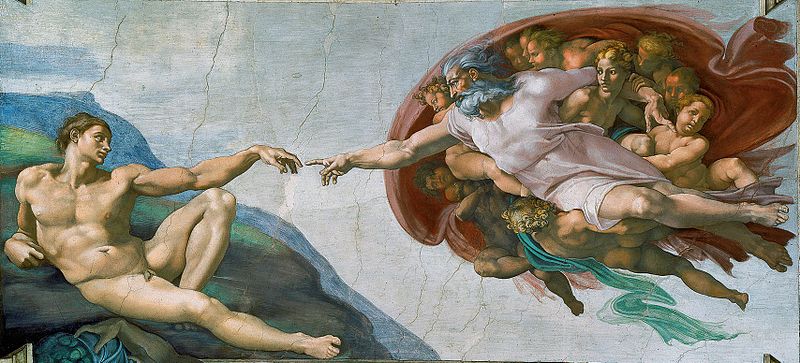
Although this scene of Adam’s creation with his finger pointed at God’s ordinarily is interpreted in religious terms, to this psychologist, at least, I also see a metaphor of the synapse. Neurons communicate to each other across a gap; they aren’t hard-wired. In that gap, much can go wrong. There may be too much of a neurotransmitter or too little. Similarly, with God and Adam, if God had created a literal clone, then Adam would have been “perfect.” In the case of the creation, and the synapse, the gap creates a host of interesting possibilities.
Aging: Rembrandt Van Rijn (1606-1669) Self-Portrait 1629 through Self-Portrait 1669
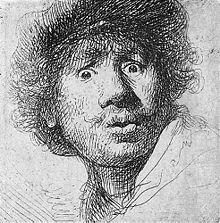
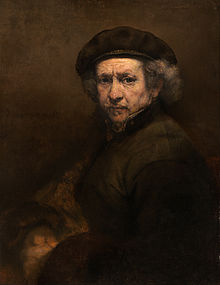
Among many of Rembrandt’s masterful creations is a series of self-portraits chronicling the changes throughout his adult years. By contrasting the beginning and end of life, these two show Rembrandt’s progression from the crisp, confident youth to the blurrier and subdued older man. The change in the brush strokes from highly detailed to more impressionistic is seen by some psychologists as an example of “old age style,” in which older artists are more interested in depicting feelings and mood rather than precise representations of their subject.
Perception: M.C. Escher (1898-1972) Ascending and Descending, 1960
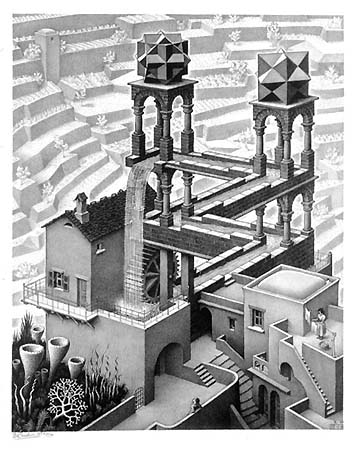
The highly popular impossible images that Escher created play upon our “top-down” perceptual processes in which we expect the three-dimensional world to look a certain way. Once you start to follow the stairs and balconies, however, you realize that your expectations now have been disproved. The misleading cues provide insight into the factors that normally guide you to see depth, and in the process become amusing in their own right.
Sensation: Georgia O’Keeffe (1887-1986) Shell #1, 1928
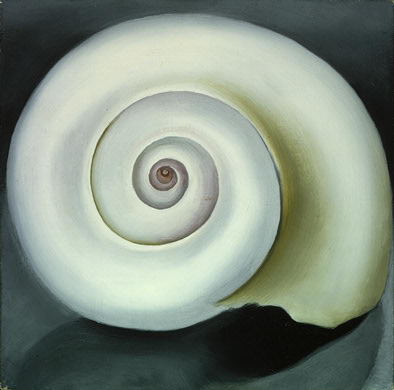
In this picture of a snail’s shell that fills the canvas, O’Keeffe focuses our attention on the minute details of an object that in reality is very small. This play upon size is informative in its own right, but the shell has the same shape as the cochlea, and therefore this provides a nice illustration of the structure that plays a critical role in hearing.
Sexuality: Gustav Klimt (1862-1918) The Kiss, 1907-08
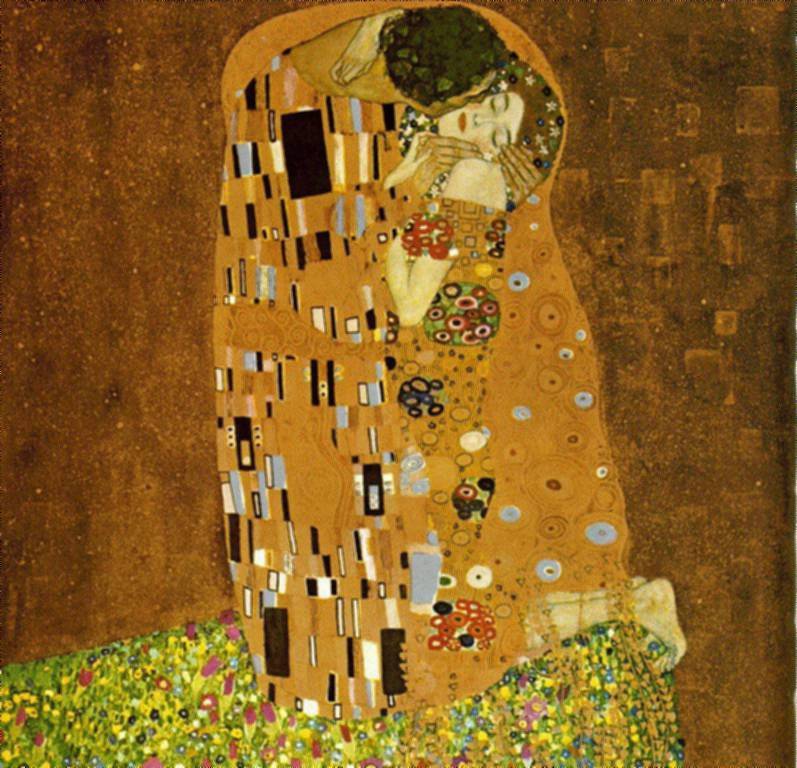
This couple’s intimacy forms the centerpiece of this lavish painting with its striking shades of gold which, in reality, is embellished with gold leaf. They appear emotionally as well as physically wrapped up with each other. Enclosed in a circle, they represent the view of intimacy as a form of emotional bonding. The painting also shows their physical intimacy, though the emotional almost overpowers the physical connection.
Stress: Piet Mondrian (1872-1944) Broadway Boogie Woogie, 1942-43 (Note: this link includes an audio explanation)
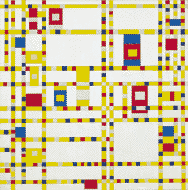
Yellow lines punctuated by black and red dots give the impression of a busy, New York, traffic grid. The painting was inspired by jazz (hence the “boogie woogie”) but it also shows the pressure of contemporary life. The opposite of a pastoral landscape, this picture not only represents, but may evoke, feelings of stress in the viewer.
Social Psychology 1 (Persuasion): Andy Warhol (1930-1987) 100 Cans, 1962
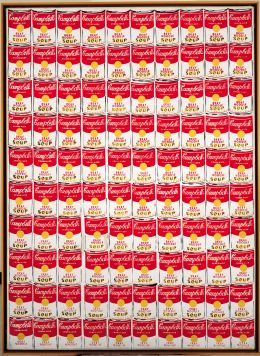
The iconic Campbell’s soup cans shown in this painting are very typical of the 1960s op-art movement; in fact, Warhol helped invent this movement. The soup can label evokes positive emotions because it is associated with one of the most common forms of comfort food that there is. That the Campbell Company undoubtedly exploits this association makes this a good example of persuasion tactics in advertising.
Social Psychology 2 (Aggression): Pablo Picasso (1881-1973) Guernica, 1937
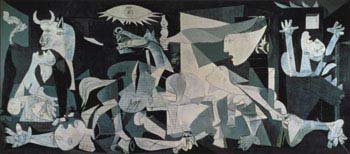
You can read the story behind this painting in the link that I provided but the basic theme of this abstract depiction of an armed conflict is that of aggression and group psychology. Although Picasso painted it from a political vantage point, the painting evokes strong emotions and causes us to think about whether we are innately aggressive or whether we could ever overcome these strong urges to hurt our fellow humans.
Motivation: Claude Monet (1840-1926) Water Lilies (Agapanthas), c.1915-1926
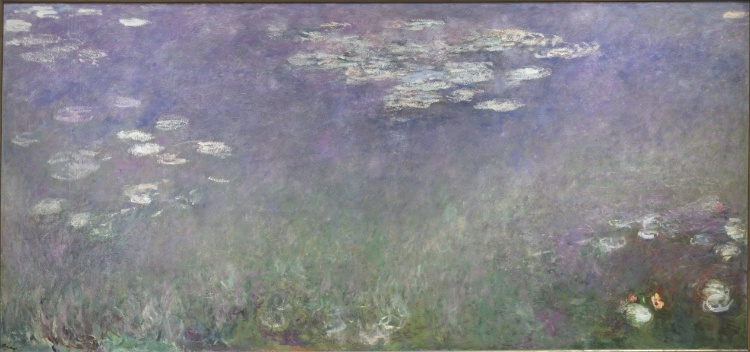
At the other end of the spectrum, Monet’s water lilies portray eternal beauty and tranquility. As beautiful as they are, however, it is the effort represented by this work that can provide inspiration In his later years, Monet developed cataracts that interfered with his ability to see blues and greens. He underwent successful cataract surgery and by the time he created these (and other) water lilies paintings, his color vision had been restored. For an 80-year-old man to have cataract surgery, a technique that would have involved considerably more risk and discomfort that it does currently, would have required remarkably high levels of motivation.
In summary, these 15 great works of art each convey a different element of psychology in ways that, I hope, you also find to be evocative and informative. If you have suggestions for works that I've missed, or should include in a second round, please feel free to send them along or post them on my Facebook group.
Copyright Susan Krauss Whitbourne, Ph.D. 2013